|
|
|
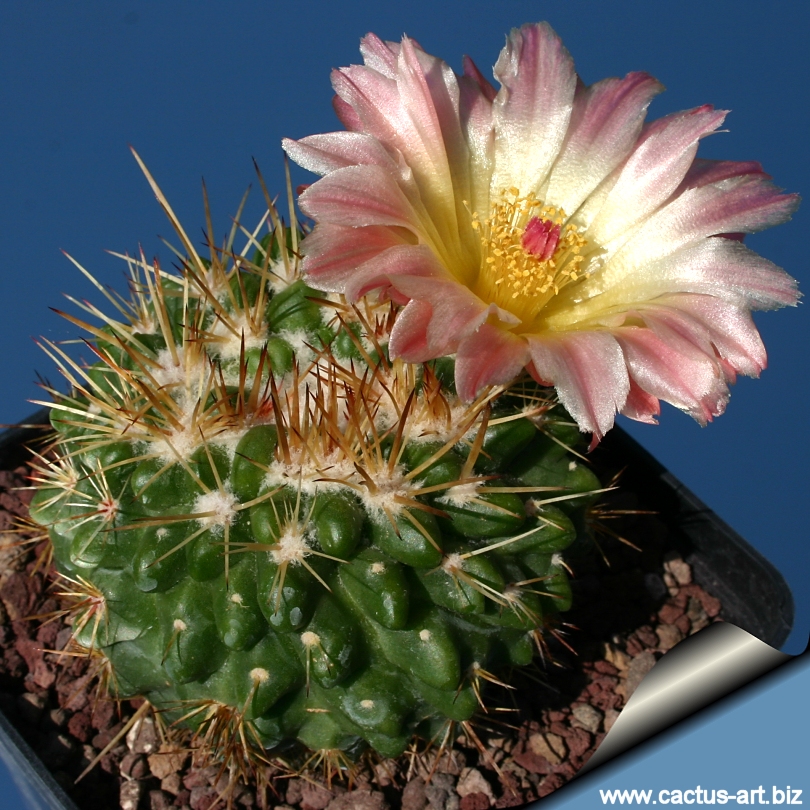
Notocactus roseoluteus forma
mostruosa
It is a very pretty plant with spectacular bicoloured salmon-pink
silky petals with a yellow centre which shares features
both of
N. herteri and
N. mammulosus
|
|
Description:
Notocactus roseoluteus is
is a large
growing plant, usually solitary or slowly branching from the base
with beautiful flowers.
The monstrous form (described in this page) differs from the standard
plant only for the ribs that are often fused and strangely tangled among
themselves.
Growth Habits:
Solitary ball
cactus to 25 cm in diameter.
Stem:
Spherical-flattened that can became shortly
cylindrical when old,
with a shiny
coppery-green with a depressed
crown covered in white wool.
Ribs: About 18-22 well defined and spiraling
with prominent, rounded tubercles with chinlike protrusion.
Areoles: Deeply seated within a depression between the chins, woolly
that become bare when older.
Radial spines: 8-11 thin, flexible and acicular
, needlelike, usually less than 10 mm long. whitish with a
brownish-red tip.
Central spines: Stouter up to 20-mm long, subulated,
brown-reddish, grayish when old.
Flowers: Apical,
particularly
large, bell-shaped, glossy, pink
in shades of salmon with yellow centres, up to 8 cm in diameter.
Blooming season: July through September.
Fruit: Globose, elongating at maturity, thin walled.
|
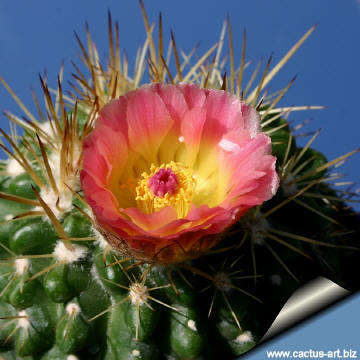 |
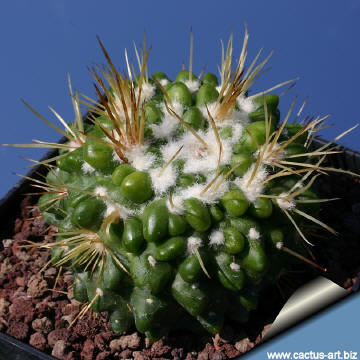 |
|
. |
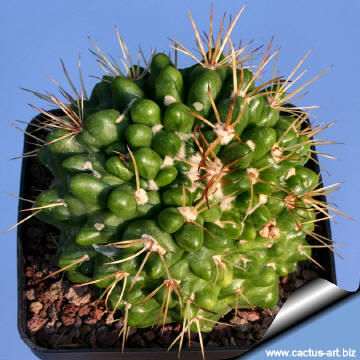 |
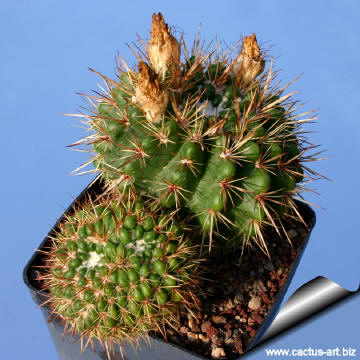 |
|
Advertising


|
|
|
|
|
Family:
Cactaceae (Cactus
Family)
Conservation status:
Listed
in
CITES Appendix II
NOTE: This
plant has been Transferred to
Parodia in 1997 by David Hunt.
Scientific name:
(Basionym)
Notocactus roseoluteus
Vliet
1973
In: Succulenta 52 (6): 108-113
Holotype: D.J. van Vliet DV75/3 (Brazil-Uruguay),Tranqueras,
Departamento Rivera, Uruguay, Herbarium of the Staatsuniversität
Utracht/NL.
Origin:
this species is limited in a small area between
Brazil and Uruguay.
Conservation status: Listed in
CITES appendix 2.
Common English Names include: Pink-yellow Ball
Cactus
Etymology: The name "Notocactus" comes from the Greek "Noto"
south and "Cactus" thistle. "Roseo" is Latin for pink and "Luteus" means
yellow.
Synonyms:
- Parodia mammulosa
(Werdermann) N. P. Taylor 1987
- Notocactus herteri
var.
roseoluteus
(Vliet 1973) N.Gerloff & Neduchal
In:
Internoto
25 (2): 60 (2004)
-
Notocactus cupreatus/luteoroseus
n.n.
Notocactus roseoluteus was known by
the provisional name Notocactus cupreatus.
Remarks:
This plant seems to incorporate some
of the features of both
N. herteri and
N. mammulosus. Both flower
colour and spination seem to be midway between the two species. The
plant can ultimately reach the size of
Notocactus herteri
but it flowers at a much
smaller size and withstands some winter coldness.
|
|
|
|
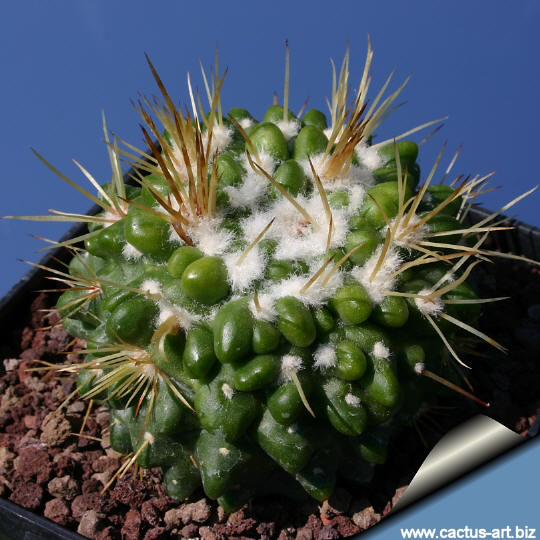
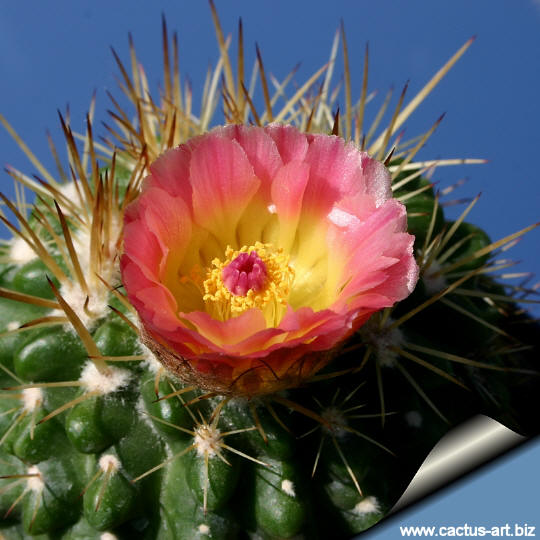
Cultivation: Suitable for the home or a greenhouse, During
winter's rest period they should be dry and cool, it is frost
resistant to -4°C but thrives best with additional heat, they like only a short winter's rest. If the soil is
allowed to be dry for too long root loss could follow but equally the
same result would occur if the plants are both wet and cold, rot
easily if the substrate is wet and cold. Prefers filtered bright light
with ample airflow. Will enjoy regular water in summer. Best if watered with rain water, an acid
compost and iron feed help to delay the onset of basal corking. A well
grown plant is a fresh glossy grass- green, contrasting with reddish
spines.
Reproduction: Usually by seeds as it seldom
produces offsets.
|
|